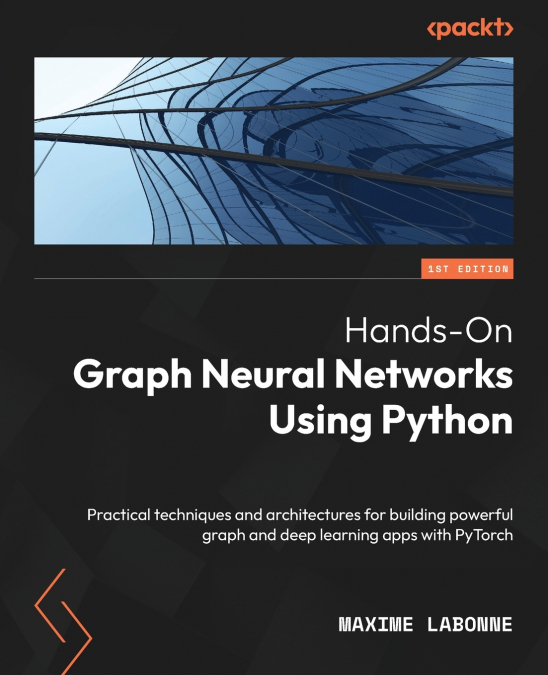
 Librería 7artes
Librería 7artes
 Donde los libros
Donde los libros
 Librería Elías (Asturias)
Librería Elías (Asturias)
 Librería Kolima (Madrid)
Librería Kolima (Madrid)
 Librería Proteo (Málaga)
Librería Proteo (Málaga)
Design robust graph neural networks with PyTorch Geometric by combining graph theory and neural networks with the latest developments and appsPurchase of the print or Kindle book includes a free PDF eBookKey Features:Implement state-of-the-art graph neural network architectures in PythonCreate your own graph datasets from tabular dataBuild powerful traffic forecasting, recommender systems, and anomaly detection applicationsBook Description:Graph neural networks are a highly effective tool for analyzing data that can be represented as a graph, such as social networks, chemical compounds, or transportation networks. The past few years have seen an explosion in the use of graph neural networks, with their application ranging from natural language processing and computer vision to recommendation systems and drug discovery.Hands-On Graph Neural Networks Using Python begins with the fundamentals of graph theory and shows you how to create graph datasets from tabular data. As you advance, you’ll explore major graph neural network architectures and learn essential concepts such as graph convolution, self-attention, link prediction, and heterogeneous graphs. Finally, the book proposes applications to solve real-life problems, enabling you to build a professional portfolio. The code is readily available online and can be easily adapted to other datasets and apps.By the end of this book, you’ll have learned to create graph datasets, implement graph neural networks using Python and PyTorch Geometric, and apply them to solve real-world problems, along with building and training graph neural network models for node and graph classification, link prediction, and much more.What You Will Learn:Understand the fundamental concepts of graph neural networksImplement graph neural networks using Python and PyTorch GeometricClassify nodes, graphs, and edges using millions of samplesPredict and generate realistic graph topologiesCombine heterogeneous sources to improve performanceForecast future events using topological informationApply graph neural networks to solve real-world problemsWho this book is for:This book is for machine learning practitioners and data scientists interested in learning about graph neural networks and their applications, as well as students looking for a comprehensive reference on this rapidly growing field. Whether you’re new to graph neural networks or looking to take your knowledge to the next level, this book has something for you. Basic knowledge of machine learning and Python programming will help you get the most out of this book.